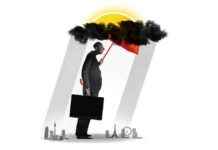President Donald Trump’s recent announcement of imposing 25% tariffs on steel and aluminum imports has stirred quite a controversy. This decision, aimed at targeting China, has raised concerns about its impact on the U.S. economy and consumers. In a recent NPR segment, White House correspondent Danielle Kurtzleben sheds light on the implications of these tariffs and what it means for American businesses and households.
Understanding the Tariffs: What You Need to Know
The newly imposed tariffs of 25% on steel and aluminum imports mark a significant move by the Trump administration. While these tariffs resemble those implemented during Trump’s first term, the current rates are notably higher, particularly for aluminum. The administration’s rationale behind these tariffs is to combat China’s dominant position as the world’s largest steel exporter. Despite the fact that the U.S. does not directly import much steel or aluminum from China, the administration argues that Chinese steel finds its way into the country through other nations.
It is essential to note that Canada is the primary source of aluminum imports for the U.S., followed by other key allies like Mexico and South Korea. Despite previous tariff threats against Canada and Mexico, the Trump administration has proceeded with imposing tariffs on these countries, albeit with some exceptions. Unlike previous tariffs that included carve-outs for certain allies, these new tariffs are comprehensive, affecting all countries without exemptions.
The Economic Impact of Tariffs: Boon or Bane?
In the short term, American steel and aluminum industries are poised to benefit from these tariffs as they shield against foreign competition and drive up prices. Market reactions following the announcement reflected this sentiment, with shares of American companies like Alcoa and U.S. Steel experiencing an uptick. However, the broader economic repercussions are more nuanced, especially for industries reliant on these metals, such as aircraft and auto manufacturing.
According to Gary Hufbauer, a senior fellow at the Peterson Institute for International Economics, the increased costs of inputs coupled with potential retaliatory tariffs from other countries could lead to job losses in these sectors. Hufbauer emphasizes the domino effect of higher prices and retaliatory measures, painting a grim picture for industries intertwined with steel and aluminum.
As President Trump hints at further tariffs in the pipeline, particularly targeting reciprocal tariffs and potential tariffs on cars, pharmaceuticals, and semiconductors, uncertainty looms over the future of U.S. trade policy. The lack of a structured rollout in tariff announcements characterizes Trump’s approach, leaving industries and consumers in a state of unpredictability.
In conclusion, the imposition of 25% tariffs on steel and aluminum imports by the Trump administration has sparked debates about its efficacy in addressing trade imbalances and its broader impact on the U.S. economy. As businesses brace for potential challenges and consumers anticipate price fluctuations, the evolving landscape of trade policy under the current administration remains a topic of keen interest and scrutiny.
Copyright © 2025 NPR. All rights reserved. Visit our website terms of use and permissions pages at www.npr.org for further information. NPR transcripts are created on a rush deadline by an NPR contractor. This text may not be in its final form and may be updated or revised in the future. Accuracy and availability may vary. The authoritative record of NPR’s programming is the audio record.



















